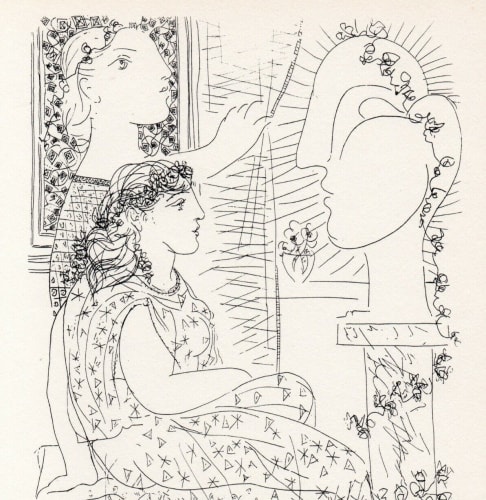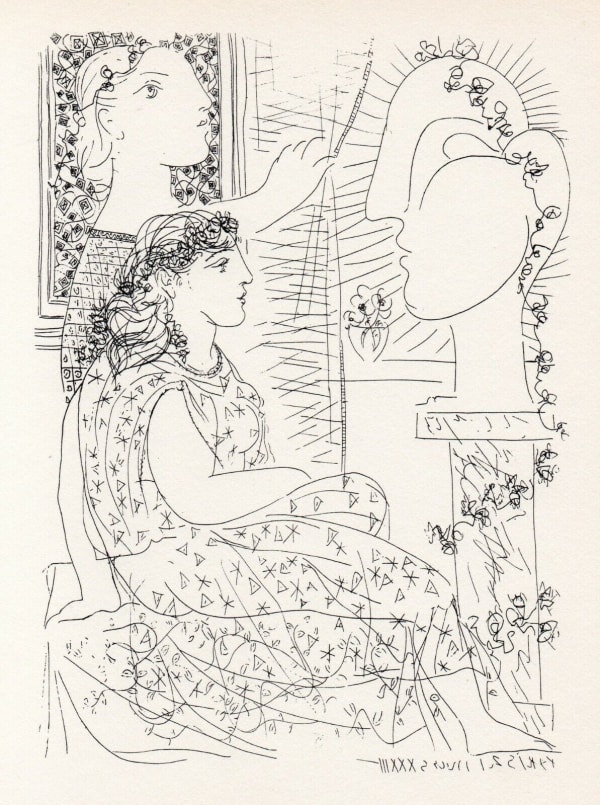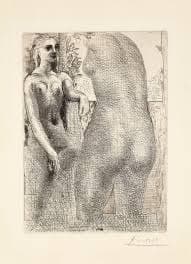Picasso: The Vollard Suite: Andipa, London
“Barely installed in rue Laffitte, around 1895, I just wanted to publish prints, so I asked painters to produce them… in truth, it was a considerable risk, but it turned out to be a great artistic achievement” – Ambroise Vollard, Recollections of a Picture dealer, 1937.
Between 1930 and 1937, Pablo Picasso created one hundred etchings, now known as the Suite Vollard. Widely appreciated as the artist’s finest achievement in printmaking, its title pays tribute to suite’s publisher, Ambroise Vollard, a Parisian art dealer. Vollard was a key figure in Modernist and Impressionist art, instrumental in the careers of Picasso's contemporaries Paul Cézanne and Paul Gauguin.
Picasso’s Vollard Suite is expansive in its composition and themes. Influenced by his first trip to Rome in 1917 where he saw sculptures by Bernini and Michelangelo, the artist fused neoclassical form with the dark and irrational sensibility of his earlier surrealism. The suite combines six identifiable themes: The Battle of Love, The Sculptor’s studio, Rembrandt, The Minotaur, and the Blind Minotaur. Altogether, the themes deal with love and eroticism, mythology and mortality, the artist’s muse and art: they are a lens with which to look at the complex dualities at play within both the artist’s inner life and his work.
Picasso’s ‘golden muse’, Marie Thérèse Walter, with whom he had a long affair with, features throughout several works, particularly in The Sculpture’s Studio. In the series about art itself, Walter is portrayed as a classical voluptuous figure, admiring the sculptures created in her own image and reclining with her Grecian lover in Le Repos devant le Sculpture Petite Torse (Sculptor and reclining model at window viewing a sculpted small torso). These etchings are characterised by sensuousness, in contrast to the sexual violence of The Battle of Love. In The Battle of Love, Marie-Thérèse is a helpless victim of a God-like man whose assault is represented by enmeshed, frenetic lines.
In The Minotaur and The Blind Minotaur theme, the half-man, half-bull from Greek mythology is refigured as a Surrealist symbol of the irrational, as well as drawing upon Picasso’s own Spanish heritage where bullfighting is an important sport. The Minotaur in Picasso, far from the purely primitive beast in mythology, is seen blinded and guided by a young girl (Minotaure aveugle guidé par une fillette I-III/Blind Minotaur Guided by a Young Girl in the Night), sleeping next to Marie-Thérèse, and drinking amongst women. Scholars have often interpreted the Minotaur as representing facets of Picasso’s own personality. Decades later in 1960, the artist stated “If all the ways I have been along were marked on a map and joined up with a line, it might represent a Minotaur”.
Andipa’s ‘Picasso: Vollard Suite’ exhibition brings together some of the most visually arresting and thought-provoking prints of the twentieth century. Simultaneously classical and modern, the incompleteness of the suite – Ambroise Vollard tragically died just three weeks died before its due publication, adds to its intrigue and allure.
-
Discover our selection of Pablo Picasso prints.



















